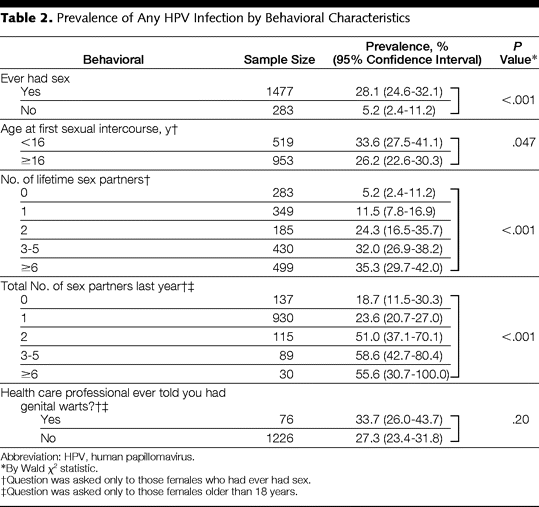ワクチンで癌が予防できる。予防できる唯一のがんは、子宮頚癌。今年、グラクソ・スミスクラインから、子宮頚癌予防ワクチン「サーバリックスCervarix」が発売された。
子宮頚癌は、世界で年間約50人発症し、約27万人死亡。がんのなかでは、乳がんに次いで2番目の死因。2006年6月に米国ではじめて発売されて以降、欧米や豪州、カナダなど世界100カ国以上で承認。国内の適応は、「10歳以上の女性に、通常、1回0.5mLを0、1、6ヵ月後に3回、上腕の三角筋部に筋肉内接種」。
ウイルス(HPV:ヒトパピローマウイルス)の癌原性のあるタイプ(16,18型)は子宮頸癌(扁平上皮細胞癌及び腺癌)の発症に関連。HPV-16及び18が子宮頸癌の約70%、HPV-16,18,31及び45を合わせて子宮頸癌の78.5~80.3%に影響する。
(課題)
*価格は病院によって異なり、自費。1回17,000~20,000円?。自治体によっては、公費。
*2010年末に万有製薬より、ガルダシルGardasilが発売予定。尖圭コンジローマも含めたHPV-6、11、16、18型含有。
*HPV-16型及び18型以外の癌原性HPV感染に起因する子宮頸癌及びその前駆病変の予防効果は未確認
*接種時に感染が成立しているHPVの排除及び既に生じている病変の進行予防効果は期待できない。
*定期的な子宮頸癌検診の代わりとなるものではない。本剤接種に加え、子宮頸癌検診の受診やHPVへの曝露、性感染症に対し注意することが重要である。
*予防効果の持続期間は確立していない。
メーカーとの勉強会を病院で開催した際に、「性交渉をしていない女性でもHPVに感染しているのか?」「高齢者はどのくらい感染しているのか?」「10歳以上でどの年齢がいちばん感染率が高いのか?」
感染症だから、HPVの有病率について質問がでるのは当たり前である。
米国女性におけるヒトパピローマウイルス感染の有病率
Prevalence of HPV Infection Among Females in the United States
JAMA. 2007;297:813-819.
→ 20-24歳がいちばん有病率が高く、結婚している女性は、未婚または離婚後シングルの女性よりも有病率は低い。性交渉をしていない女性でも、5%くらいは感染をしている。
Context Human papillomavirus (HPV) infection is estimated to be the most common sexually transmitted infection. Baseline population prevalence data for HPV infection in the United States before widespread availability of a prophylactic HPV vaccine would be useful.
Objective To determine the prevalence of HPV among females in the United States.
Design, Setting, and Participants The National Health and Nutrition Examination Survey (NHANES) uses a representative sample of the US noninstitutionalized civilian population. Females aged 14 to 59 years who were interviewed at home for NHANES 2003-2004 were examined in a mobile examination center and provided a self-collected vaginal swab specimen. Swabs were analyzed for HPV DNA by L1 consensus polymerase chain reaction followed by type-specific hybridization. Demographic and sexual behavior information was obtained from all participants.
Main Outcome Measures HPV prevalence by polymerase chain reaction.
Results The overall HPV prevalence was 26.8% (95% confidence interval [CI], 23.3%-30.9%) among US females aged 14 to 59 years (n = 1921). HPV prevalence was 24.5% (95% CI, 19.6%-30.5%) among females aged 14 to 19 years, 44.8% (95% CI, 36.3%-55.3%) among women aged 20 to 24 years, 27.4% (95% CI, 21.9%-34.2%) among women aged 25 to 29 years, 27.5% (95% CI, 20.8%-36.4%) among women aged 30 to 39 years, 25.2% (95% CI, 19.7%-32.2%) among women aged 40 to 49 years, and 19.6% (95% CI, 14.3%-26.8%) among women aged 50 to 59 years. There was a statistically significant trend for increasing HPV prevalence with each year of age from 14 to 24 years (P<.001), followed by a gradual decline in prevalence through 59 years (P = .06).
HPV vaccine types 6 and 11 (low-risk types) and 16 and 18 (high-risk types) were detected in 3.4% of female participants;
HPV-6 was detected in 1.3% (95% CI, 0.8%-2.3%),
HPV-11 in 0.1% (95% CI, 0.03%-0.3%),
HPV-16 in 1.5% (95% CI, 0.9%-2.6%), and
HPV-18 in 0.8% (95% CI, 0.4%-1.5%) of female participants.
Independent risk factors for HPV detection were age, marital status, and increasing numbers of lifetime and recent sex partners.
Conclusions
HPV is common among females in the United States.
Our data indicate that the burden of prevalent HPV infection among females was greater than previous estimates and was highest among those aged 20 to 24 years.
However, the prevalence of HPV vaccine types was relatively low.
これから)今日もあたたかい?、祖母の通夜。




コメント